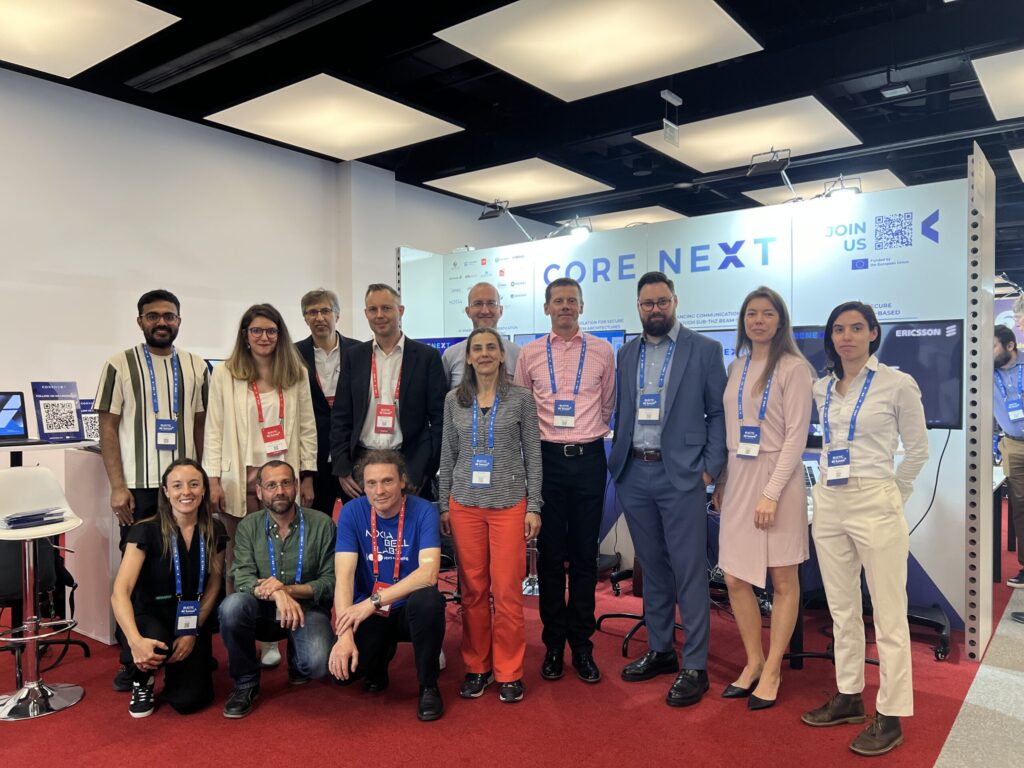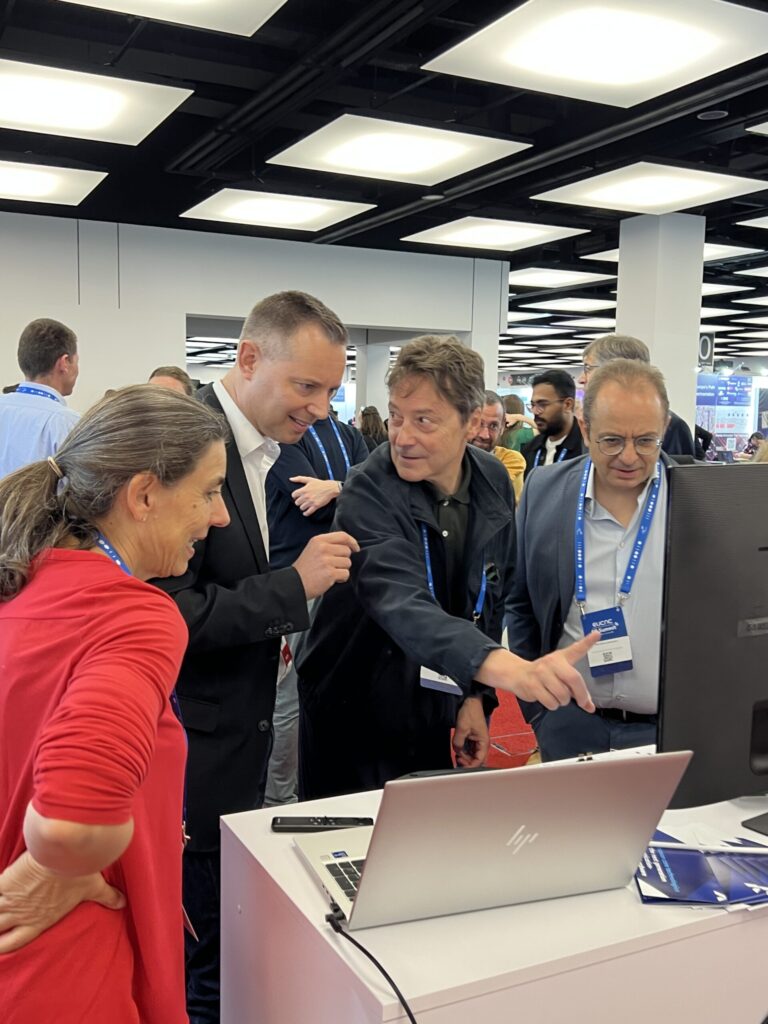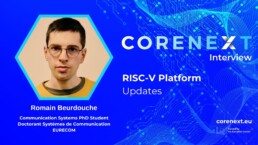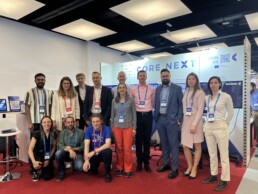Advancing Open Air Interface 5G with RISC-V and Hardware Acceleration, an Interview with Romain Beurdouche from EURECOM
Romain Beurdouche, a doctoral researcher in Communication Systems at EURECOM, recently discussed key updates on integrating hardware accelerators with the Open Air Interface (OAI) 5G RAN stack, with a particular focus on the role of RISC-V platforms. In this interview, he outlines both the technical strides made so far and the expected outcomes from ongoing research.
Romain reflects on the early stages of hardware integration in the OAI project, which began with a forward error correction (FEC) accelerator embedded within an FPGA card specifically built for 5G operations. Although this initial attempt marked a significant milestone, the integration was suboptimal. Key inefficiencies stemmed from underutilised APIs and an inability to effectively share the accelerator across different workloads.
The COREnext initiative provided a critical opportunity to address these issues. As Romain Beurdouche explains, the project focused on refining the efficiency of integration by revisiting how the OAI stack interfaces with acceleration hardware. Improvements were made in workload distribution and in aligning the accelerator’s capabilities more closely with the software stack’s needs. This laid the groundwork for more robust, scalable, and flexible integrations moving forward.
The role of RISC-V in coarse-grained acceleration
Attention is now turning to RISC-V, an open standard instruction set architecture (ISA), as a promising platform for coarse-grained acceleration. While still emerging in terms of commercial adoption (with no widespread availability of RISC-V laptops or servers for professional use) the technology holds potential for more efficient and cost-effective computing.
Romain notes that the drive toward energy and cost efficiency, alongside regulatory pressures, necessitates exploration of such architectures. RISC-V, particularly when used in conjunction with inline acceleration within the same system-on-chip (SoC), aligns with these broader technological and regulatory shifts.
COREnext provides access to sample hardware and expert insights that the OAI community may not independently possess. This ecosystem-level collaboration allows OAI to experiment with and adapt to newer computing paradigms, positioning the platform for next-generation network demands.
Anticipated feedback from open-source integration environment
Looking ahead, Romain anticipates that open-sourcing the integration environment will serve as a catalyst for innovation across the telecommunications landscape. Historically, hardware and software vendors have sought integration with OAI as a means of demonstrating the viability and performance of their solutions in a full-stack, real-world network environment.
This approach benefits both the vendors, by showcasing their products in a demanding and publicly visible setting, and the wider research and development community, which gains access to a tested and transparent platform for experimentation. Similar interest and collaboration following the release of the RISC-V-based integration tools are expected, as it provides an essential proving ground for components within the 5G and eventually 6G ecosystem.
The interview with Romain Beurdouche highlights a forward-thinking trajectory for Open Air Interface, facilitated by both improved hardware integration and a deliberate move toward RISC-V acceleration. By enhancing the efficiency of the 5G stack and providing an open-source environment for validation and collaboration, OAI continues to serve as a key enabler for innovation in modern mobile networks.
WATCH THE FULL INTERVIEW
COREnext at EuCNC & 6G Summit 2025 - Demonstrating 6 Solutions for European Connectivity
The COREnext project took centre stage at the EuCNC & 6G Summit 2025 in Poznań, Poland showcasing a forward-looking approach to connectivity and digital infrastructure. Located at Booth No. 53, the COREnext team engaged with visitors through six demonstrations and a series of in-depth discussions, offering insights into the project’s role in creating the next generation of secure network systems.
The COREnext booth attracted significant interest throughout the event, with guided tours introducing attendees to the project's live demonstrations. These highlighted how COREnext addresses critical challenges across architecture design, system integration, data protection, and trust management - key pillars for establishing a robust digital infrastructure.

6 live demonstrations
Each demonstration focused on a specific technological innovation or application area:
- Eavesdropper Avoidance
A sub-THz demonstrator featuring real-time beam steering. It illustrated how directional transmission significantly reduces the risk of data interception, enhancing communication security in high-frequency environments.
- High Datarate Interconnects over Plastic Fibre
This demo highlighted a high-speed link using polymer microwave fibres (PMF) in the H-band, demonstrating how these materials and methods can support future high-frequency, high-bandwidth communication systems.
- Radio Identification
Demonstrating the use of AI to distinguish individual radio devices based on transmitter-level imperfections. Even with identical chipsets, the system can reliably identify valid versus unauthorised transmitters, reinforcing trust at the physical layer.
- Digital Processing with M³
This demonstration presented the M³ platform’s approach to secure, hardware-isolated processing. It showed how digital systems can be protected from internal and external threats through architectural separation and isolation.
- Secure Acceleration
We showcased secure hardware acceleration on an FPGA platform. The demo showed how privacy-preserving cryptographic processing can support sensitive data use cases, such as those in healthcare, while enabling multi-tenant deployment.
- Trust Evaluation and IoT Management
This demo introduced a Trust Manager that assesses IoT devices in real time. By assigning tasks based on trust levels and system resource availability, it ensures that devices operate reliably and securely across decentralised environments.

Engaging with experts
In addition to the demonstrations, the booth provided visitors the chance to speak with key contributors from across the COREnext consortium. Representatives from imec, AUSTRALO, Barkhausen Institut, Nokia, Infineon Technologies, Ericsson, Nokia Bell Labs, and WINGS ICT Solutions were present to offer technical insights and discuss the project’s strategic goals.
Apart from presenting these project results, the COREnext partners also discussed with academic researchers, industry representatives, and policy makers about shared goal of trustworthiness. EuCNC is a wonderful opportunity for projects to meet a diverse audience, to tune in with current challenges faced by industry, and to discuss forward-looking ideas with other researchers. The EuCNC experience will encourage COREnext to continue creating impact with innovative trustworthiness solutions and share results.
Looking ahead
The engagement with the research community, industry stakeholders, and policymakers reinforced the relevance of COREnext’s work in contributing to secure communication networks. The team extends its sincere thanks to all who visited the booth, participated in discussions, and provided feedback. Such interactions are valuable to assess the project’s direction as it progresses towards its final goals.
Watch the interview with Michael Roitzsch - COREnext Project Coordinator - during the EuCNC & 6G Summit Conference 2025:


